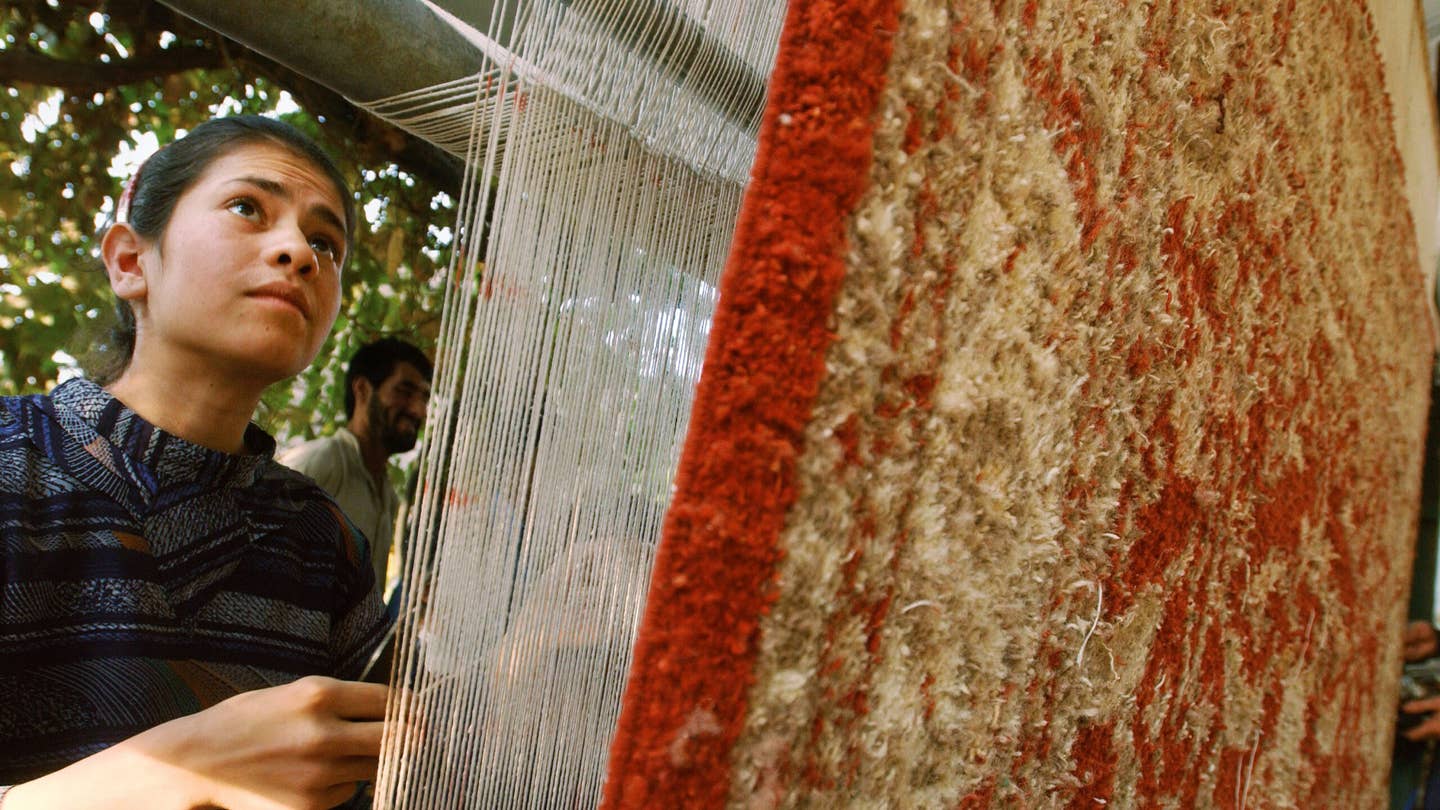The odd and beautiful art form of the Afghan war rug

KABUL, AFGHANISTAN – SEPTEMBER 3: Fourteen-year-old Pakezah looks over a rug she is making at her home in the Kartoh Parwahn neighborhood September 3, 2002 in Kabul, Afghanistan. Most of the residents of the Tajik-majority neighborhood, located on a picturesque hill overlooking sprawling Kabul, are unemployed or work manual labor in the Afghan capital. (Photo by Chris Hondros/Getty Images)
SUMMARY
As troops walk through the bazaars of Afghanistan, they'll always see the same collection of things for sale. Bootleg DVDs of shows that weren't even interesting during their time, horrible knockoffs of brand-name clothing, souvenirs with the names of neighboring countries (mostly) scraped off, and gorgeous, handcrafted rugs depicting the mujahedin fighting the Soviets.
It's almost surreal. Among the piles of junk are these masterpieces (albeit some marred with spelling errors).
Afghanistan has a history filled with constant warfare. So, it makes sense that their cultural art reflects this. Afghan war rugs have been a staple of the culture's art for hundreds of years, but it was during the 1979 Soviet invasion that the rugs were used as a form of quiet protest.
Their AK-47s and tanks were woven into the rugs next to geometric shapes and flowers. The Baluch or Tup-e-Tung (or just "war rugs") began appearing all over the country. The tradition continued well into America's intervention in 2001. Contemporary war rugs now include the attack on the World Trade Center and drones.
Funnily enough, the Afghan people prefer not having a constant reminder of the warfare that has plagued their homeland for generations. However, Westerners go crazy for them. War rugs almost exclusively sold to foreigners can fetch up to $25,000 at auction — but are often bartered for much less.
While it's true that they're very well-crafted and are the cause for much employment in the country, it still needs to be said that the U.S. Department of Labor recognizes that some are created using child labor. The rugs sold on U.S. and NATO military bases in Afghanistan are carefully vetted to avoid the exploitation of children.
SHARE
